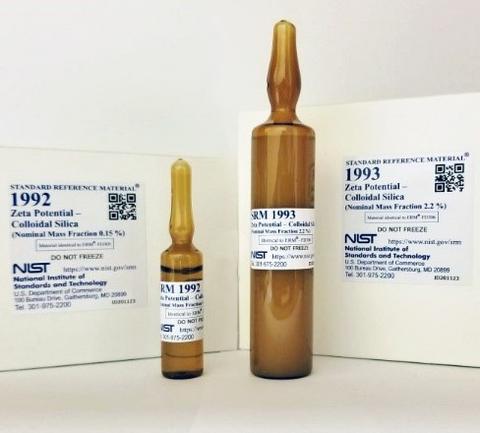
Two new Standard Reference Materials from the National Institute of Standards and Technology give researchers and manufacturers a way to check the performance of instruments that measure the electrical charge on microscopic particles. The SRMs were developed at the request of industry in a unique collaboration between NIST and the Joint Research Centre of the European Commission in Belgium.
Standard Reference Materials 1992 and 1993 can help ensure the accuracy of measurements made with electrophoretic light scattering and electroacoustic instruments. The former technique uses light scattered from moving particles in an applied electric field to measure their velocity; The latter applies a high-frequency electric or acoustic field to generate particle vibration, then measures the resulting acoustic signal or electrical current. These results allow calculation of electrophoretic mobility, the speed of particles relative to the strength of the applied electric field, and Zeta potential, the electrical potential near the particle surface. These reference materials are the first to certify values for Zeta potential, which is used in many industries that rely on microscopic particles.
For example, Zeta potential is considered a critical indicator of whether nanoparticles are likely to remain evenly dispersed in a fluid or collect into clumps that would hinder their performance or make them a threat to health and the environment. Nanoparticles are used as drug delivery systems (e.g., in recently released mRNA vaccines against COVID-19), in antibiotic coatings, pigments, textiles, and many consumer products, among other applications.
SRMs 1992 and 1993 consist of colloidal silica particles suspended in an aqueous solution. SRM 1992 is ideal for light scattering methods, whereas SRM 1993 has a higher concentration of particles and is appropriate for the calibration of electroacoustic instruments. They are available from NIST and from the Joint Research Center as ERM-FD305 and ERM-FD306.






